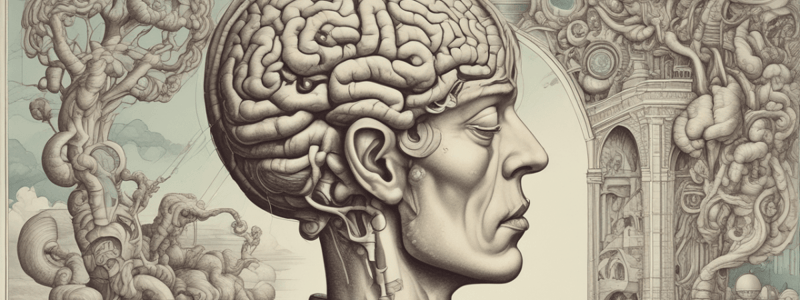Podcast
Questions and Answers
Most traumatic brain injury clients might not report symptoms immediately.
Most traumatic brain injury clients might not report symptoms immediately.
True (A)
According to the literature, up to 56% of mild TBIs go undiagnosed in the emergency room. What primary reason does the research cite for this?
According to the literature, up to 56% of mild TBIs go undiagnosed in the emergency room. What primary reason does the research cite for this?
- Many patients with mild TBIs don't seek immediate medical attention
- Emergency room doctors prioritize identifying and treating severe or life-threatening injuries, like fractures (correct)
- Mild TBIs can be difficult to diagnose, especially in the fast-paced ER environment
- The Glasgow Coma Scale is primarily used to assess the severity of a TBI, not to diagnose it
CT scans are not a reliable tool for diagnosing mild TBI.
CT scans are not a reliable tool for diagnosing mild TBI.
True (A)
A patient experiences a mild TBI. For how long might they experience ongoing symptoms?
A patient experiences a mild TBI. For how long might they experience ongoing symptoms?
Your client experienced a concussion. Their CT scan was normal. What is the best course of action?
Your client experienced a concussion. Their CT scan was normal. What is the best course of action?
A client reports persistent headaches, concentration issues, and mood changes several months after a mild TBI. This suggests:
A client reports persistent headaches, concentration issues, and mood changes several months after a mild TBI. This suggests:
A client experiences symptoms suggestive of hypopituitarism. An MRI of the brain is performed. How should you interpret the results, considering both MRI and blood tests for diagnosis?
A client experiences symptoms suggestive of hypopituitarism. An MRI of the brain is performed. How should you interpret the results, considering both MRI and blood tests for diagnosis?
When evaluating a client with a potential mild TBI, it's important to consider their background information, such as ethnicity, language, prior medical conditions, and other comorbidities.
When evaluating a client with a potential mild TBI, it's important to consider their background information, such as ethnicity, language, prior medical conditions, and other comorbidities.
If a client's ER report doesn't mention a concussion or TBI, it definitively means they did not sustain a brain injury.
If a client's ER report doesn't mention a concussion or TBI, it definitively means they did not sustain a brain injury.
Your client is involved in a TBI trial. To best convey the full impact of their injury, which of the following should be a top priority?
Your client is involved in a TBI trial. To best convey the full impact of their injury, which of the following should be a top priority?
Flashcards are hidden until you start studying
Study Notes
Mild Traumatic Brain Injury (TBI)
- Up to 56% of mild TBIs go undiagnosed in the emergency room, primarily due to the unreliability of CT scans for diagnosing mild TBI.
- A patient may experience ongoing symptoms from a mild TBI for an extended period, potentially several months.
- A normal CT scan result does not rule out a concussion or mild TBI; further evaluation is necessary.
Diagnosis and Symptoms
- Persistent headaches, concentration issues, and mood changes several months after a mild TBI suggest ongoing symptoms.
- Symptoms suggestive of hypopituitarism require both MRI and blood tests for accurate diagnosis.
Evaluation and Considerations
- When evaluating a client with a potential mild TBI, it's essential to consider their background information, including ethnicity, language, prior medical conditions, and other comorbidities.
- The absence of a concussion or TBI mention in an ER report does not definitively mean the client did not sustain a brain injury.
Communicating Injury Impact
- When conveying the full impact of a client's TBI in a trial, a top priority should be to effectively communicate the extent of their injury.
Studying That Suits You
Use AI to generate personalized quizzes and flashcards to suit your learning preferences.



